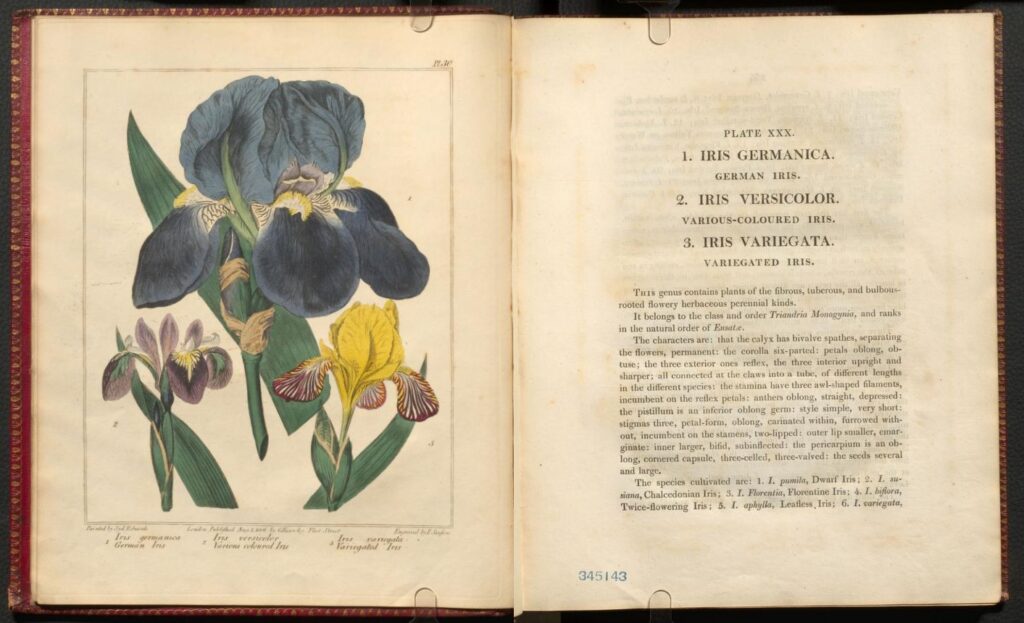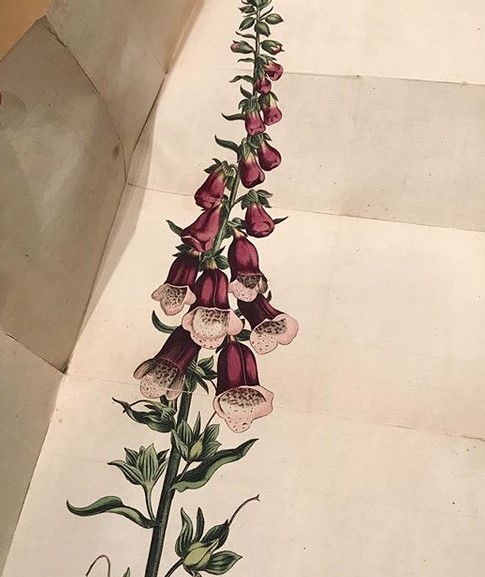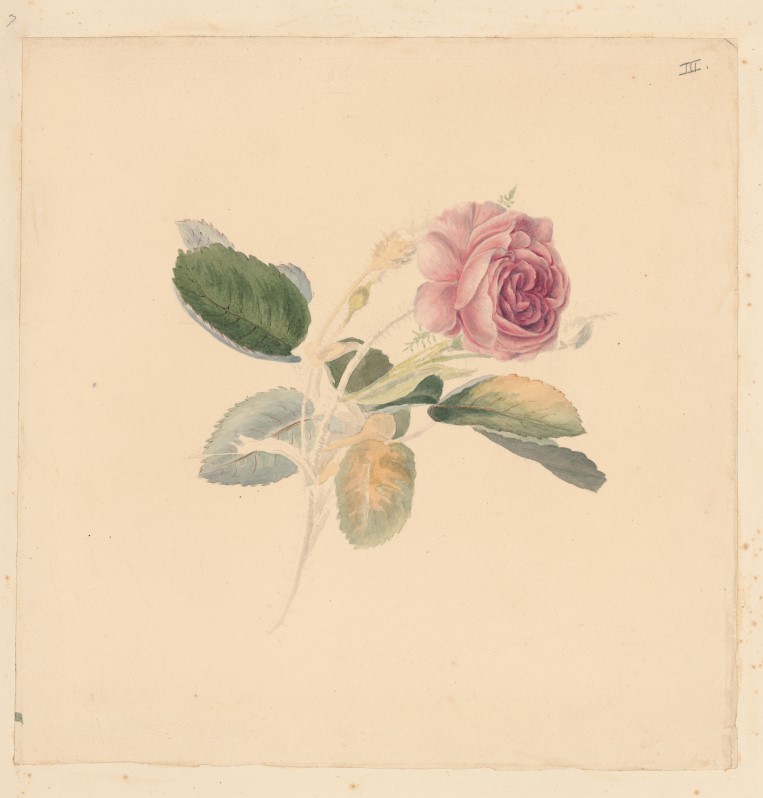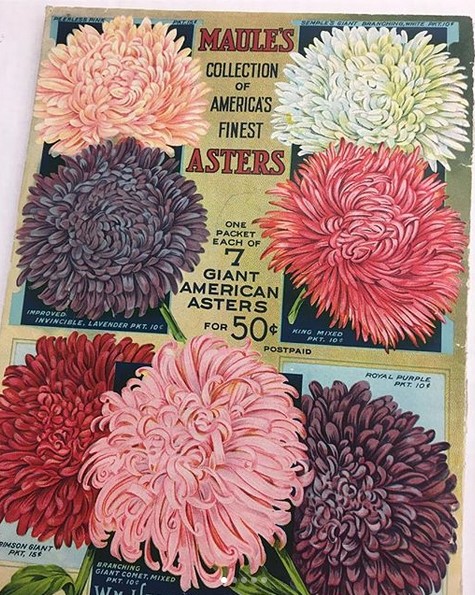July is the month of luxurious bloom and gorgeous, showy flowers. It’s also Canadian Flowers Week from July 16-22, “an annual advocacy, education and awareness campaign that celebrates Canadian grown flowers” associated with the Toronto Flower Market. Its main goal is to encourage Canadians to seek out locally and sustainably grown flowers rather than the imported flowers that are so widely used in the flower industry. One of the handy tools that they offer is a chart for each province that shows which flowers are in season when. Though the flowers in the McGill ROAAr Collection are always is season, here are a few blooms that you might be seeing in gardens around Montreal.

Our first stop are these irises found in The New Flora Britannica, a reference work of 133 plants published in 1812. This lavishly illustrated folio describes the appearance and proper care of flowering decorative plants popular in Great Britain. While Iris germanica (the large blue flower) and Iris veriegata (the yellow) were imported to Canada by European settlers and their descendants, Iris versicolor (also known as the blue flag) is native to North America and is the official flower of Quebec. For more information about the fascinating social and cultural role of botany in 18th and 19th century Britain, check out McGill’s digital exhibition “Interpersonal Botany.” You can flip through the two volumes of the New Flora Britannica here and here.

Next, in the Osler Library of the History of Medicine, we find fascinating works like this one on the medicinal properties of Digitalis (commonly known as foxglove). An account of the Foxglove, and some of its Medicinal Uses was written by William Withering, an English botanist and physician credited with the first systematic study of the medicinal uses of Digitalis. It had been used in traditional remedies for many centuries, but Withering was the first to isolate an extraction of the leaf of Digitalis as a potent treatment for dropsy (edema). The publication of An account of the Foxglove caused some controversy, as Erasmus Darwin accused Withering of plagiarism. Digitalis is still used today as the active ingredient in drugs that treat congestive heart failure. Though foxglove was imported from Europe, it thrives in Canadian woodlands. It is toxic to humans and many animals.

Though they are not on the Canadian Flower Week bloom chart, roses of all kinds are in season between mid-June and October. This delicate specimen was painted by Elizabeth Gwillim, an Englishwoman who lived in Madras (now Chennai) between 1801 and 1807. Though she was primarily known for her paintings of birds (which predated Audubon’s famous works by about 20 years), Gwillim also painted fish and flowers. The collection of Gwillim’s watercolours held by McGill’s Blacker Wood Natural History Collection is currently at the centre of the fascinating international and interdisciplinary Gwillim Project, which studies the artwork and correspondence of Gwillim and her sister, Mary Symonds. To read more about Elizabeth Gwillim’s botanical work, see this blog post from earlier this year. To follow the series of Gwillim Project presentations showcasing the work of scholars from around the world, check out the Project’s YouTube page. You can see more from the Gwillim Collection in McGill’s Archival Collection Catalogue.

Finally, we come to a handful of asters from a beautiful McGill collection: a group of early 20th century seed catalogues. Most asters – like the ones pictured here – originate from Eurasia. There are North American species that look much different, with only a single row of petals. Commercial catalogues like these give valuable insight into the history of their trade – in this case agriculture, botany, and flower cultivation in Canada. These catalogues act as artifacts that document things like which varietals were available or most popular, which companies were distributing what, and the cost of various seeds – information that can provide concrete evidence for subtle changes in the industry, or changes to social norms and popular gardening practices that may be otherwise very difficult to study.
By Aeron MacHattie, Archivist, Rare Books and Special Collections













Leave a Reply
You must be logged in to post a comment.